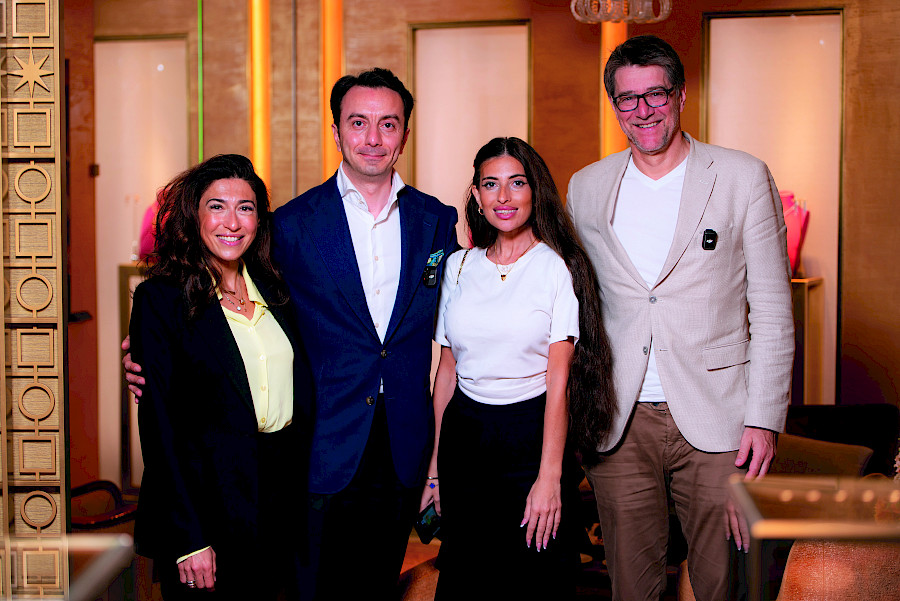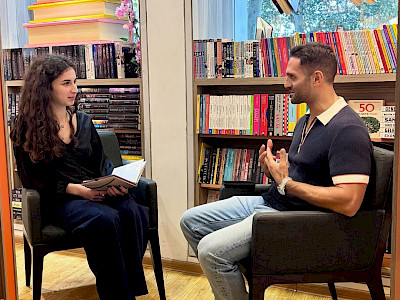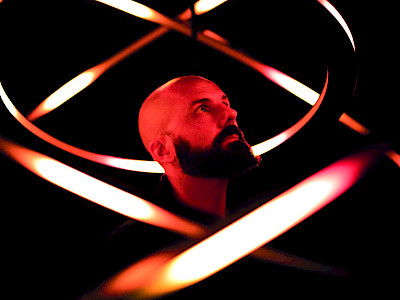
A Conversation with Gianfranco Ritchel During His Visit to Baku at the Invitation of Bvlgari
We had long envisioned a conversation about men’s watches in a time saturated with gadgets that tell time. We wanted to speak with someone deeply knowledgeable—yet not tied to any particular brand. And the opportunity came.
Luxury editor Nigar Gakhramanova and journalist Jeyhun Ali sat down for a live discussion with Gianfranco Ritchel—a prominent independent watch expert whose profound insight is highly sought after by leading watch brands. Based in Geneva, Gianfranco is a member of the Fondation de la Haute Horlogerie and plays an important role in the Grand Prix d’Horlogerie de Genève (the Oscars of the watch world). He is also involved in numerous ventures across watchmaking and the broader luxury industry. Most notably, he radiates an inspiring passion for his craft. Gianfranco began making watches in childhood. Beyond his formal training as a watchmaker, he also brings valuable experience in marketing and sales from his time with prestigious brands, as well as in wholesale and retail.
This conversation reveals Gianfranco Ritchel’s deep affection and dedication to the art of watchmaking.
What led you to this career path?
To be honest, I didn’t choose it. My grandfather, father, and brother were all watchmakers. I wanted to pursue something else, but my father drove me four hours to a watchmaking school. At first, I was upset—but two years in, I fell in love with it. Today, I’m proud to have started so young, working with my father since I was 13.
It gave me a unique advantage, having lived through the critical period of the 1970s and ’80s, when Swiss watchmaking was under serious threat from quartz technology. I witnessed those shifts firsthand. Now, I can say with certainty: I don’t work—I enjoy. I find joy and pleasure in what I do.
What fascinates you most about the watchmaking process?
While the watch itself is fascinating, it’s ultimately a man-made object, the result of a larger creative process. The real beauty lies in what’s behind it—who crafted it, the materials chosen, the love poured into its finishing and decoration. That, to me, is the most charming and powerful aspect of watchmaking.
Doing something no one has done before—or doing the same thing in a new way—is what drives me. Seeking accuracy, precision, and innovation requires a unique state of mind. In watchmaking, everyone is responsible for their own part. If you’re not convinced your work is perfect, you risk losing trust. This deep sense of responsibility is ingrained in the tradition of watchmaking—and I truly love it. I know I’m in the right field.
You’re here at the invitation of Bvlgari. Which Bvlgari watch is your favorite?
Always the next one. I love discovering what’s coming. What fascinates me about Bvlgari is not just a specific watch, but the way they think—and the tools and decisions behind the scenes that most people don’t even notice. Sometimes, the aesthetic choices are more important than the technical ones. At Bvlgari, the fusion of design and traditional watchmaking is exceptional.
When I see masterpieces like the Octo Finissimo Ultra COSC, launched last year, I understand that Bvlgari is not just making watches—they’re pushing boundaries. Sometimes they go completely off the beaten path—and yet remain precise.
I choose some watches because I like them. Others, because I love their story. A watch is a semiotic object—it reflects who you are or how you want to be perceived. The Bvlgari Octo line is bold and expressive.
Bvlgari holds a remarkable record with the Octo Finissimo collection. What’s your take on this saga of ultra-thin innovation?
It’s one of the most extraordinary watchmaking sagas of the last decade. The Octo Finissimo is not just about breaking records in thinness—though that alone is an incredible feat. What Bvlgari has done is push the boundaries of engineering, materials, and design, all while maintaining elegance and wearability. Achieving this level of innovation without compromising precision or reliability is extremely difficult.
But what impresses me most is the consistency: year after year, Bvlgari introduces a new record-breaking model, each time raising the bar. It’s not just about being the thinnest; it’s about rethinking what’s possible in mechanical watchmaking. They’ve made ultra-thin movements not a niche, but a defining identity—and that’s rare. The Octo Finissimo is more than a watch; it’s a statement of vision, and daring.
How can a brand—or a watch—reflect someone’s character?
A brand expresses values. The customer chooses which of those values to represent. It’s the same with cars, shoes, clothes. A brand must define its values and stay consistent. People wear watches in both sporty and elegant settings. If a brand offers versatility, it’s a strength.
What are the three key secrets to the art of selling watches?
There’s really one: you must love people.
Watches are, in a way, therapy—they help us feel younger, more beautiful, more attractive. You don’t need to be a watch expert to sell watches. I became one as a former watchmaker, but today, the emotional connection matters more.
A watch reflects a person’s dreams, desires, and sometimes insecurities. It can make someone feel proud and confident. Some watches symbolize the success one has achieved. There’s always a message behind it.
Can you read a person by the watch they wear?
Yes—but with caution.
In the past, when I grew up, people had one watch for life. Today, I might wear three different watches in a single day. It doesn’t always reflect who I am—it reflects who I am in that moment.
A watch says something to me—and about me.
Among all the companies you’ve worked for, which job was the most challenging, and why?
Every new job came as a surprise—I was never fully prepared, and that was the challenge.
At 20, I became a manager at Bucherer*, leading a team of 48. I had no prior experience. Every role since then has been a leap into the unknown. But if you have a clear vision, and you want it, you’ll do what it takes to reach the goal—just like in sports.
Looking ahead 10 years, how will watch brands promote their products?
Through emotion.
It’s about what the watch expresses—what it means, what that “piece of metal” represents. That’s why I love expressive watches. They go far beyond telling time.
Technology evolves rapidly. Today, everything is accessible. You don’t even need to be particularly smart—just ask ChatGPT. But this is exactly why we crave things that endure.
My children are growing up surrounded by tech, and I often warn them: in the past, hard learning was a virtue. Today, a child can find any answer online—but that doesn’t equal understanding. True meaning lies in depth, interpretation, and the human touch.
*Bucherer – a leading multi-brand watch and jewellery boutique chain in Switzerland



